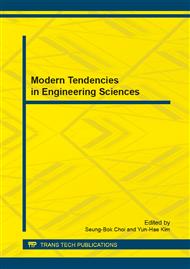p.90
p.94
p.101
p.106
p.113
p.123
p.127
p.135
p.140
Analysis Methods of Reasonable Finished State of Space-Twisting Cable Leaning Tower Cable-Stayed Bridge
Abstract:
Aimed to solve the problem that the reasonable finished state (RFS) of space-twisting cable leaning tower cable-stayed bridge (SLCSB) is inconsistence with actual finished state. The numerical analysis and field test methods are used. Firstly, based on comprehensive studying of the interaction between influencing factors of the finished state and construction state, analysis methods of coupling RFS and rational construction state (RCS) are proposed with the thought of construction process control implanting into design stage. Secondly, a main span of 220m SLCSB is used as example, the coupling analysis method proposed in the paper was proved. Finally, with some data measured from actual project, it shows that: this method can ensure the cable tension, the main beam and the main tower bending moments forming RFS at the same time, while the problems of the inconsistency between RFS and one-step bridge status is solved.
Info:
Periodical:
Pages:
113-122
Citation:
Online since:
February 2014
Authors:
Price:
Сopyright:
© 2014 Trans Tech Publications Ltd. All Rights Reserved
Share:
Citation:


